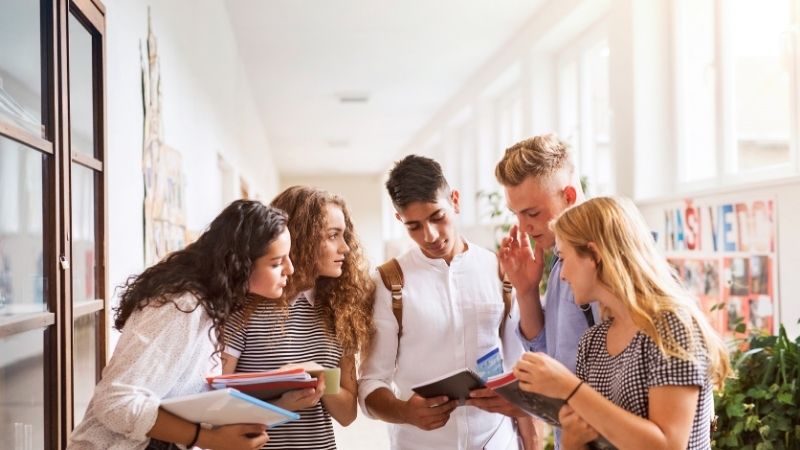
As a technology enthusiast, I am constantly amazed by the ways in which augmented reality (AR) is transforming various industries.
But when it comes to education, the potential of AR apps for learning, virtual field trips, interactive 3D models, AR books, and hands-on learning tools is truly extraordinary.
In this article, we will dive into the intersection of augmented reality and education and explore how these innovative tools can be used to construct interactive learning experiences that engage and inspire students.
So buckle up and get ready to embark on a journey where imagination meets reality!
Key Takeaways
- AR apps enhance comprehension and foster creativity and critical thinking skills.
- Virtual field trips allow exploration of places that may be difficult to visit in person.
- Interactive 3D models provide a tangible way to visualize complex concepts.
- AR books bring static images to life and create an immersive environment.
Benefits of AR Apps for LeARning
You'll love the benefits of AR apps for learning, such as virtual field trips and interactive 3D models.
Augmented Reality (AR) has revolutionized the way we learn by bringing educational experiences to life. With AR apps, you can embark on virtual field trips to places you may never have the opportunity to visit otherwise. Imagine exploring ancient civilizations or diving into the depths of the ocean, all from the comfort of your own home or classroom.
These apps also offer interactive 3D models that allow you to visualize complex concepts in a tangible way. Whether it's dissecting a frog or examining the structure of a molecule, AR apps provide an immersive learning experience that goes beyond traditional textbooks.

By integrating AR technology into education, students are empowered with hands-on learning tools and interactive content that stimulates their curiosity and engagement. This innovative approach not only enhances comprehension but also fosters creativity and critical thinking skills.
Overall, AR apps for learning offer endless possibilities for constructing interactive learning experiences that cater to individual interests and needs. So why settle for static textbooks when you can dive into an augmented world of knowledge?
Enhancing Education Through Virtual Field Trips
By using virtual field trips, you can transport yourself to different locations and immerse yourself in new environments without leaving the classroom. It's an exciting way to enhance education and provide students with a unique learning experience.
Virtual field trips allow us to explore places that may be difficult or impossible to visit in person, such as ancient ruins or faraway countries. With the help of technology, we can now dive into history, science, art, and culture like never before. These immersive experiences not only capture our attention but also engage our senses and spark curiosity.
We can walk through virtual museums, interact with historical figures, and even travel through time. Virtual field trips offer freedom from traditional constraints and expand our educational horizons by bringing the world to us.
Exploring Concepts With Interactive 3D Models
Immerse yourself in a whole new level of understanding by interacting with captivating 3D models. These interactive tools have revolutionized the way we learn, allowing us to explore complex concepts in a visually engaging and hands-on manner.
Let me take you on a journey through the possibilities:

- Picture yourself dissecting a frog virtually, examining every intricate detail without any mess or odor.
- Imagine exploring the depths of the ocean, swimming alongside majestic sea creatures, all from the comfort of your classroom.
- Envision stepping into ancient civilizations, walking through historical landmarks and gaining an immersive perspective on history.
- Visualize manipulating molecules and atoms, constructing chemical compounds with your own virtual hands.
- Finally, picture unraveling the mysteries of outer space, navigating through galaxies and witnessing cosmic events unfold before your eyes.
With these remarkable 3D models at our fingertips, learning becomes an adventure where freedom to explore and discover is limitless.
The Power of AR Books in Education
AR books offer a unique and engaging way for students to interact with educational content. With the power of augmented reality, these books bring static images to life, allowing students to explore and learn in an immersive environment.
As I flip through the pages, characters leap off the page and interactive elements appear before my eyes. The freedom to touch, move, and manipulate objects within the book enhances learning by providing a hands-on experience that fosters curiosity and critical thinking.
By integrating AR technology into traditional reading materials, educators can create dynamic learning experiences that captivate students' attention and promote deeper understanding of complex concepts.
Transitioning from AR books to hands-on learning tools further expands the possibilities for interactive learning experiences.
Next, let's explore the potential of using hands-on learning tools to construct interactive learning experiences...
Using tactile materials and manipulatives, I can actively engage with my learning, fostering a deeper understanding of complex concepts. Here are five examples of hands-on learning tools that have greatly enhanced my interactive learning experiences:

3D Models: These tangible representations allow me to explore and manipulate objects in three dimensions, helping me grasp their structure and functions.
Puzzles: Solving puzzles challenges my critical thinking skills while teaching me problem-solving strategies in a fun and engaging way.
Building Blocks: Constructing with building blocks enhances my spatial awareness and creativity, as I design and build structures from scratch.
Math Manipulatives: Using counters, cubes, or fraction bars helps me visualize abstract mathematical concepts, making them more concrete and understandable.
Science Kits: Experimenting with science kits allows me to conduct hands-on experiments, experiencing the scientific method firsthand.
Frequently Asked Questions
How Can AR Apps for LeARning Benefit Students With Different LeARning Styles?
AR apps for learning can benefit students with different learning styles by providing interactive and visual experiences. They cater to auditory, visual, and kinesthetic learners, allowing them to engage with content in a way that suits their individual preferences and needs.
Are There Any Limitations or Challenges to Using Virtual Field Trips in Education?
There are some limitations and challenges to using virtual field trips in education. One challenge is the need for reliable internet connection. Another limitation is the lack of physical presence and hands-on experience.

Can Interactive 3D Models Be Used Across Different Subjects and Grade Levels?
Interactive 3D models are a versatile tool that can enhance learning across subjects and grade levels. They provide a hands-on, visual experience that helps students grasp complex concepts and engage in interactive learning.
How Can AR Books Enhance Reading Comprehension and Engagement in Students?
AR books enhance reading comprehension and engagement in students by bringing stories to life through interactive elements. They provide a multisensory experience, allowing readers to visualize characters and settings, interact with the story, and deepen their understanding of the text.
Some examples of hands-on learning tools that can be used with AR technology for interactive learning experiences include interactive puzzles, manipulation kits, and science experiment simulations. These tools enhance engagement and comprehension in students.
 Careers in EducationElementary EducationHigh School EducationEducational TechnologyTeaching StrategiesSpecial EducationPrivacy PolicyTerms And Conditions
Careers in EducationElementary EducationHigh School EducationEducational TechnologyTeaching StrategiesSpecial EducationPrivacy PolicyTerms And Conditions
